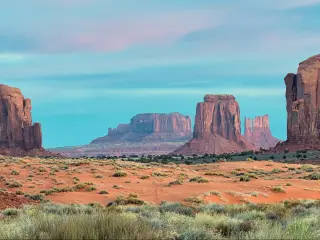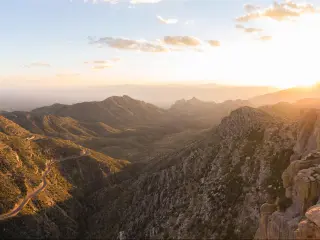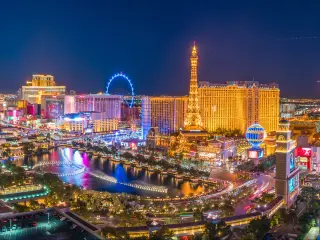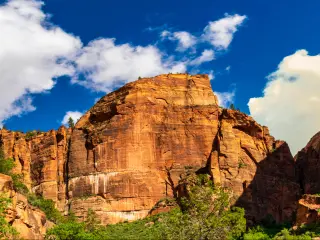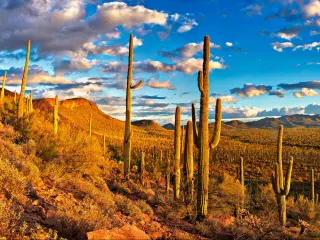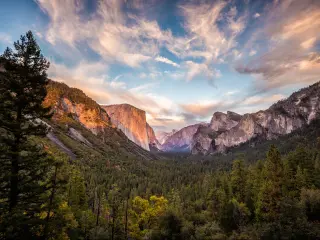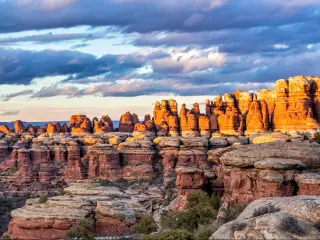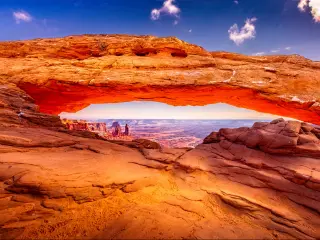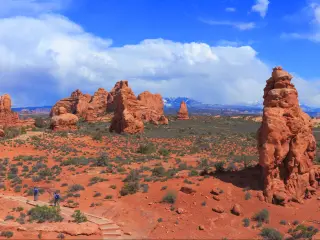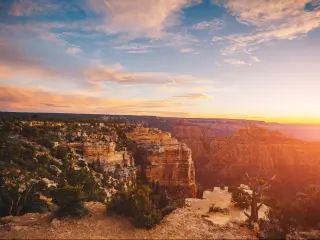Can you drive through Canyonlands National Park?
Canyonlands National Park is situated deep in the heart of the Utah desert: an outdoor adventure playground of impressive rock formations and vast canyons. This rugged, unique landscape makes it a popular destination for hiking, backpacking, rafting, and 4x4 off-roading.
You can drive through Canyonlands National Park, although not all of the routes within it are connected. The 105-mile journey takes 5 hours and 45 minutes, and the incredible features include Mesa Arch, Candlestick Tower, and Shafer Canyon Overlook.
A drive through the Utah desert has so much to offer, so keep on reading to discover the best routes around Canyonlands, possible entrances, and much more to get you in the mood for this memorable road trip.
Can you drive through Canyonlands National Park?
| Route | Starting point | End point | Seasonal availability |
|---|---|---|---|
| Main Route | Dead Horse Mesa Scenic Byway U-313 | Shafer Basin Road | Open year-round |
| Alternative Route | Dead Horse Mesa Scenic Byway U-313 | Grand View Point | Open year-round |
Driving through the park is by far the most popular option but there are other alternatives available. There are several local tour operators offering 4x4 tours through the park, a good option for anyone without their own 4x4 vehicle.
Guided mountain bike tours are a good way to get off the beaten track and explore the park on 2 wheels. Expert knowledge of the terrain will be helpful, although a certain level of ability and fitness is also a definite advantage!
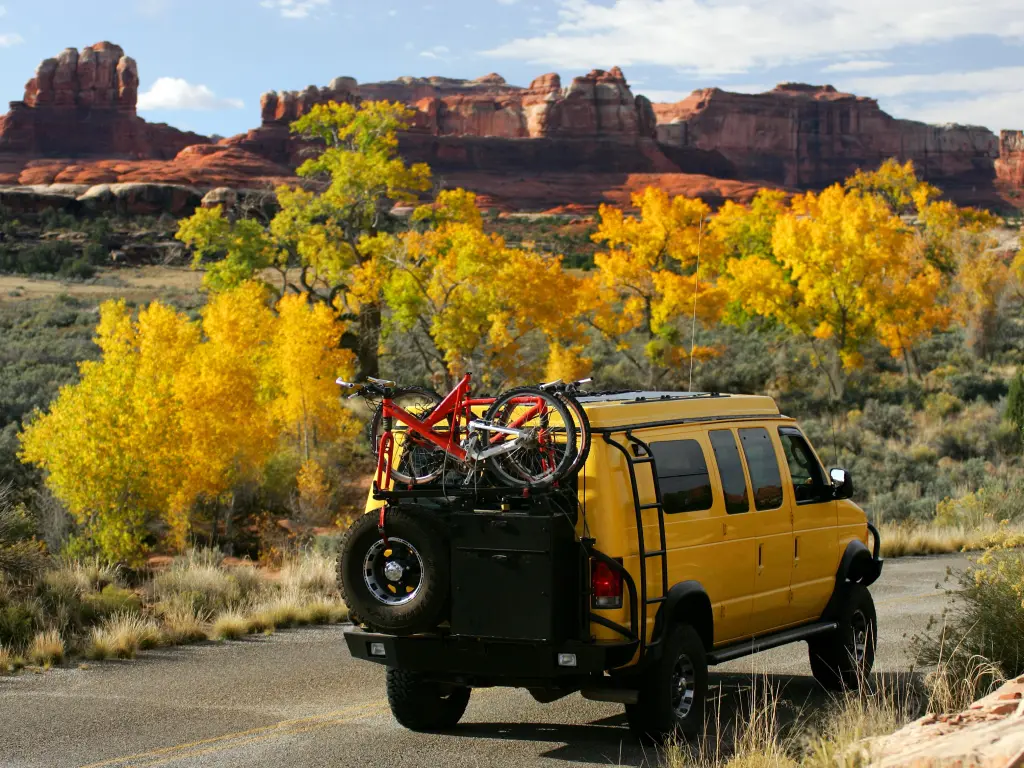
You can also take to the water and enjoy a whitewater tour, sailing through the canyons and giving a different perspective of the park. However, if you wish to tour the park at your own pace and take in all your own favorite attractions, driving yourself around is the most suitable option.
How to drive through Canyonlands National Park on the Main Route
Our main route through Canyonlands National Park begins north of Moab, close to Arches National Park. The route takes you through the heart of the Park, with impressive views of the Mesas and Canyons.
Much of the road is unpaved, and it can be rocky in places and should only be attempted in a 4x4 vehicle. Given the nature of the route, it will be slower than normal driving, but with so many campgrounds along the way, stopping in the park overnight is an experience to savor.
The route begins by leaving Hwy 191 at Moab Giants and taking UT-313 W towards South Fork Sevenmile Canyon. You'll soon arrive at Intestine Man Petroglyphs, a series of ancient rock drawings believed to be up to 4,000 years old.
The route then continues west passing Big Mesa and Plateau Viewpoints, both well worth stopping off at to take in the views before reaching Mineral Canyon Switchbacks where the road becomes more difficult, before running parallel to Green River towards Labyrinth Campgrounds, close to the River and an excellent spot for spending the night.
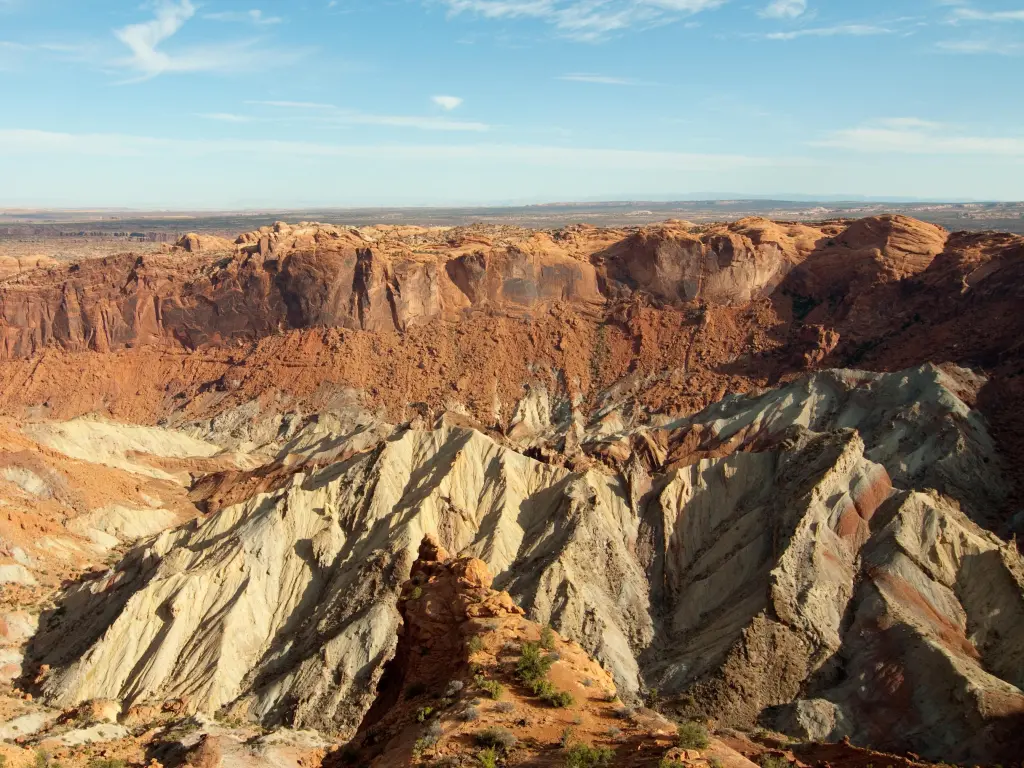
Continuing south, join White Rim Road towards Upheaval Dome Trailhead, where you can hike your way to Upheaval Dome Overlook and get a clear view of the colorful rock layers that make up the Dome, formed over millions of years.
The route then continues past several other campgrounds as the road follows Green River to Candlestick Viewpoint. The route then heads east to the White Rim Trail.
Heading south, the route becomes more windy as it approaches Murphy Hogback Campground before skirting around the bottom of Junction Butte and taking you past Gooseberry Canyon and Airport Tower Viewpoint and then arriving at Musselman Arch.
Continue north as the road twists and turns past Gooseneck Overlook Trailhead and Shafer Canyon Overlook before arriving at Island in the Sky Visitor Center.
The route is open all year round, although driving in the searing desert heat of summer is not advisable, and in the winter months, icy road conditions can see the route closed. The route is narrow in places and winds its way through the desert with some steep drop-offs, so driving it will be enjoyed best in good conditions.
How to drive through Canyonlands National Park on the Alternative Route
Our alternative route through Canyonlands National Park begins in the same manner as our main route, by leaving Hwy 191 at Moab Giants taking UT 313 W towards Intestine Man Petroglyphs, and continuing past the popular Viewpoints at Big Mesa and Plateau.
The route heads south passing Gemini Bridges Trailheads and Cowboy Camp Campgrounds before joining Grand View Point Road. The route is paved, unlike a lot of the park's other backcountry rocky and unevenly surfaced tracks, making it suitable for all vehicles.
As you continue south, the road becomes the Island in the Sky Road as you pass Marlboro Point. You'll soon arrive at Shafer Canyon Overlook and Trail Viewpoint, giving a sensational view down the Canyon as the Trail winds its way over 1,500 feet through the colorful sandstone and off into the distance.
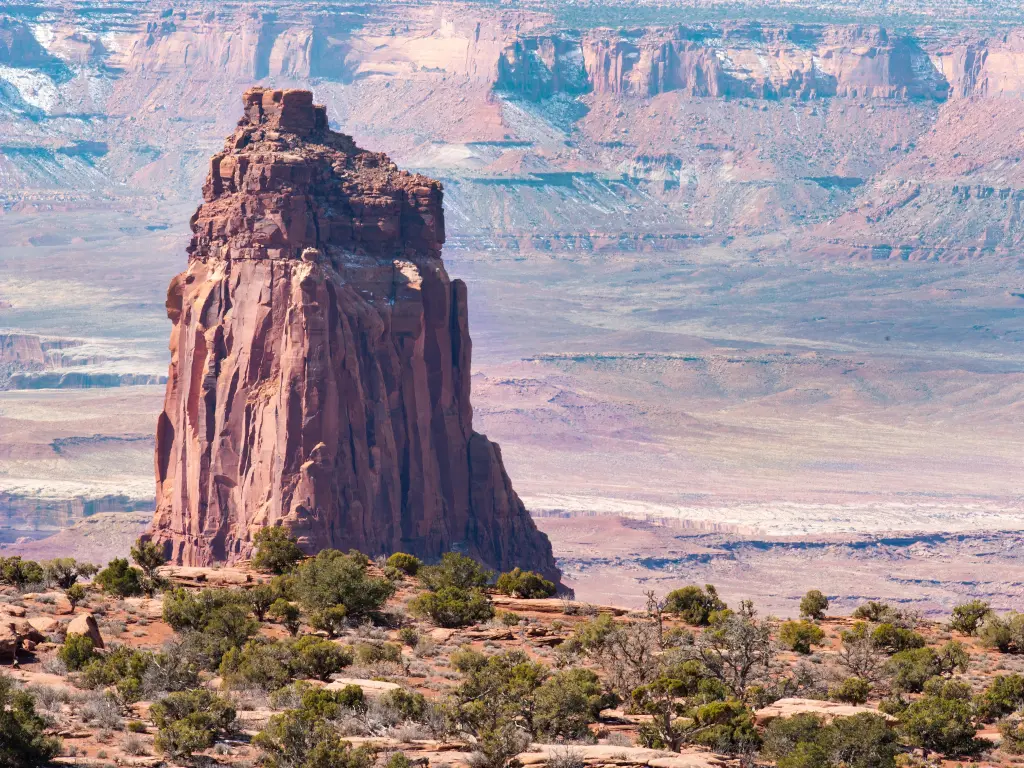
Continue onwards to Mesa Arch, an iconic image synonymous with Canyonlands and one of the most photographed attractions in the Park. The route then continues passing impressive Overlooks of Candlestick Tower and Buck Canyon as you reach White Rim Overlook Trailhead.
The view from here is simply outstanding, with deep canyons and rock pinnacles on show as far as the eye can see. You'll then head past Orange Cliffs Overlook before arriving at Grand View Point, the final destination.
Grand View Point is the end of the road on the Island in the Sky scenic drive and from here you can witness spectacular views across the miles of sprawling canyons to The Maze, The Needles, and the distant mountains on the horizon.
How long does it take to drive through Canyonlands National Park?
With its choice of entrances, a drive through Canyonlands can vary significantly, but all of the roads through the Park can be tackled in a few hours.
Our main route covers 105 miles and you can reach the Island in the Sky Visitor Center in around 5 hours and 45 minutes. The likelihood is you will take much longer when factoring in stops at the many viewpoints and stunning features, so ideally the route will take a day or two and involve a night at one of the Parks campgrounds.
The Alternative route can see you arrive at Grand View Point in 50 minutes, as the 34-mile journey is along paved roads and is much more straightforward.
As with the main route, it is well worth spending a night in the desert and exploring the Park at a relaxed pace taking time to appreciate the natural wonders on offer.
Which entrance should you arrive at in Canyonlands National Park?
Canyonlands National Park is located in southeastern Utah, close to the town of Moab and the Island in the Sky District lies around 30 miles away. Canyonlands is split into four districts, and each has its own entrance, although our two recommended routes both enter the park at the Island in the Sky entrance.
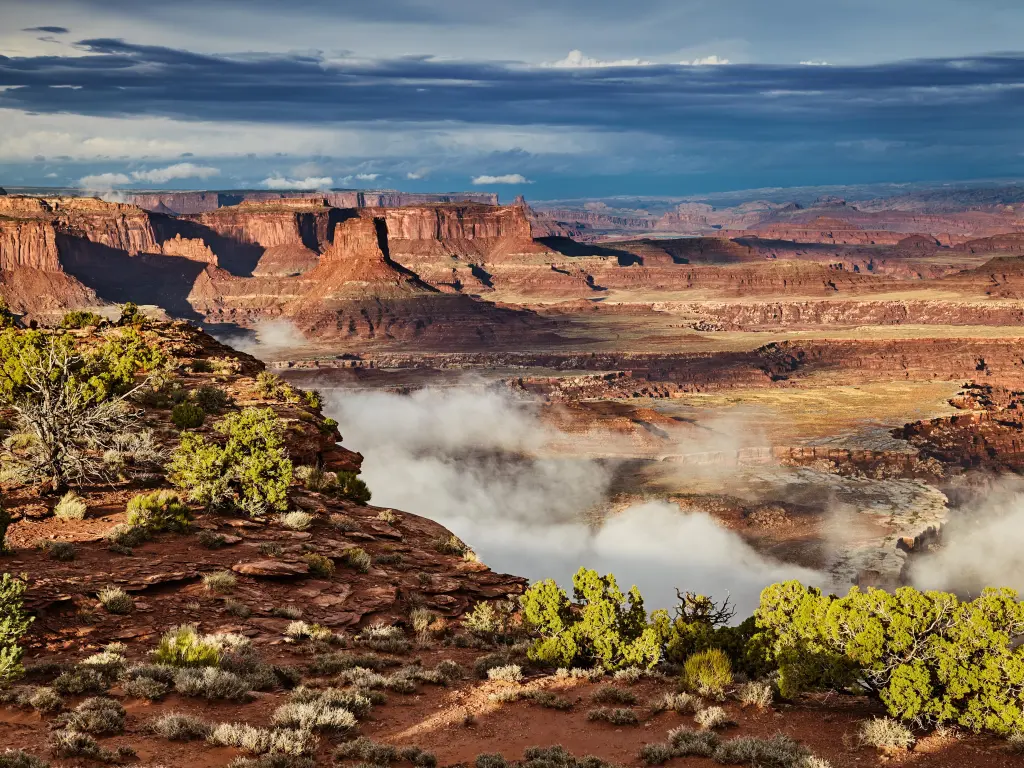
The three main entrances are the Island in the Sky Entrance, the most popular situated towards the northern end of the park, The Needles Entrance in the southeast, and The Maze Entrance in the southwest. Plan your itinerary in advance and pick the entrance most suitable for you.
It is important to remember that the southern entrances don't have a route that links to the Island of the Sky District, but this just means you can spend more time in the park exploring all it has to offer.
| Origin City | Recommended entrance | Total Distance | Total Time |
|---|---|---|---|
| Moab, UT | Island in the Sky Entrance | 10 miles | 15 minutes |
| Las Vegas, NV | Island in the Sky Entrance | 450 miles | 6 hours 45 minutes |
| Phoenix, AZ | Needles District Entrance (Note you won't have direct access to routes through this entrance) | 460 miles | 7 hours 20 minutes |
| Seattle, WA | Island in the Sky Entrance | 1,070 miles | 16 hours |
| Albuquerque, NM | Needles District Entrance | 360 miles | 6 hours |
| Denver, CO | Island in the Sky Entrance | 340 miles | 5 hours 30 minutes |
| Santa Fe | Needles District Entrance | 380 miles | 6 hours 30 minutes |
| Sale Lake City | Island in the Sky Entrance | 220 miles | 3 hours 50 minutes |
Best places to stop on a drive through Canyonlands National Park
If you're considering a drive through Canyonlands National Park, then it's well worth spending a night or two in the area to explore the park to its fullest and experience the different districts and the alternative park entrances.
Many visitors to the area choose to take in the nearby Arches National Park as well, and you'll definitely need to spend a few days if you wish to enjoy both. Here is our ultimate guide to visiting both of these gorgeous national parks.
Keep in mind that you might need a reservation to ensure you have an entry slot to Arches National Park, so check the official website ahead of time to avoid disappointment.
Enjoy monumental views in Moab
The nearest city to Canyonlands is Moab and a stay here is ideal for tackling both our routes through Canyonlands National Park. It is situated just 11 miles from Dead Horse Mesa Scenic Byway, the road into Canyonlands, and gives easy access to the Island in the Sky District.
Moab is the gateway to the Utah desert parks and was a popular meeting point for early traders in the 19th century, and today it stands as one of the most attractive destinations in the American Southwest.
Moab is popular with outdoor enthusiasts, with its world-class mountain bike trails, incredible rock climbing opportunities, and spectacular 4x4 routes.
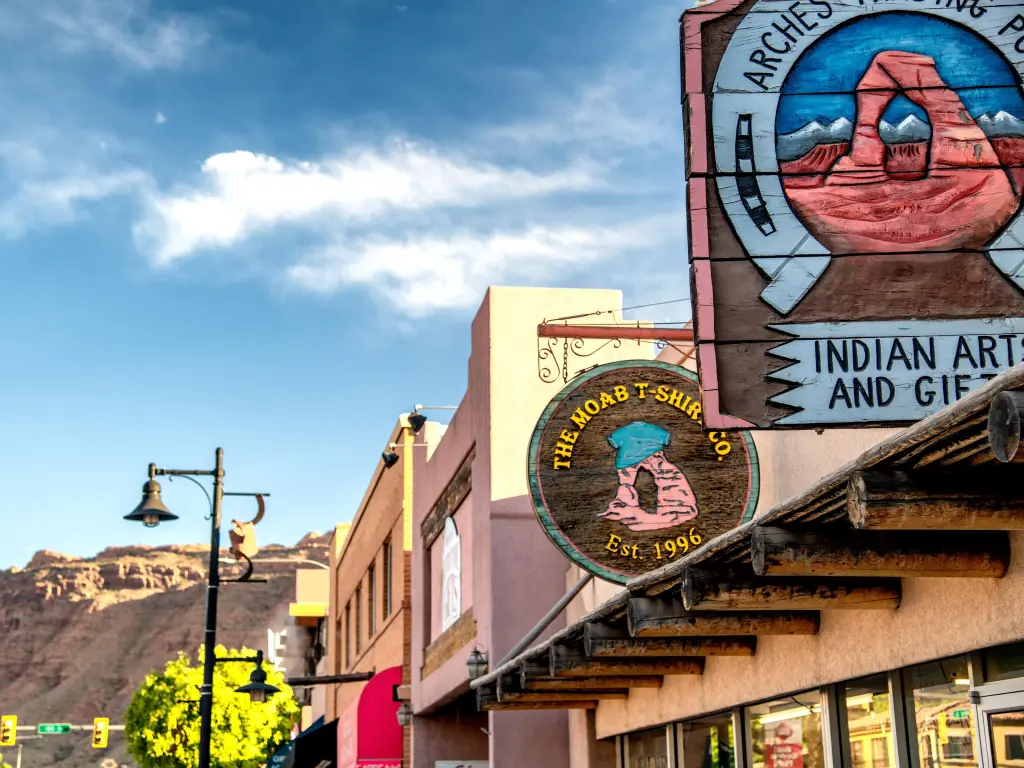
For a stay in Moab, we recommend a night or two at the Hoodoo Moab. After a day in the desert heat, a refreshing dip in the outdoor pool is the perfect way to unwind, before dining in the Josie Watt Restaurant, renowned for delicious steaks and sushi.
The hotel also has a desert spa and fitness center, and you can enjoy spectacular views of the stunning red rock scenery from the comfort of your balcony.
The hotel is situated close to the heart of downtown Moab, and it's only a short walk to the Moab Information Center, Moab Museum, and local Rafting and Jeep Tours.
A historic stay in Blanding
Our second recommendation for a stopover in Utah is the city of Blanding, located just under 90 miles from Dead Horse Mesa Scenic Byway, your road into Canyonlands Island in the Sky District. The southern entrance to the Needles District of Canyonlands National Park lies around 70 miles north of Blanding.
The city itself is known for its rich Native American Heritage, and its location is close to both Navajo and White Mesa Ute Native American Reservations. Mormon settlers arrived in the late 19th century and you can still see many of the original buildings today.
The city is the perfect place from which to explore Canyonlands, Valley of the Gods, Bears Ears Monument, and the Natural Bridges Monument, and is a gateway to a wide variety of outdoor activities in southeast Utah.
You'll welcome the air-conditioned rooms when staying at Stone Lizard Lodge. The rooms are well equipped with flat-screen TVs and well-equipped kitchens and you can relax in the gardens whilst planning the following day's adventures. The quaint rooms and suites are inspired by Puebloan dwellings and you can start the day with a delicious homemade breakfast, enjoyed in the outdoor picnic area.
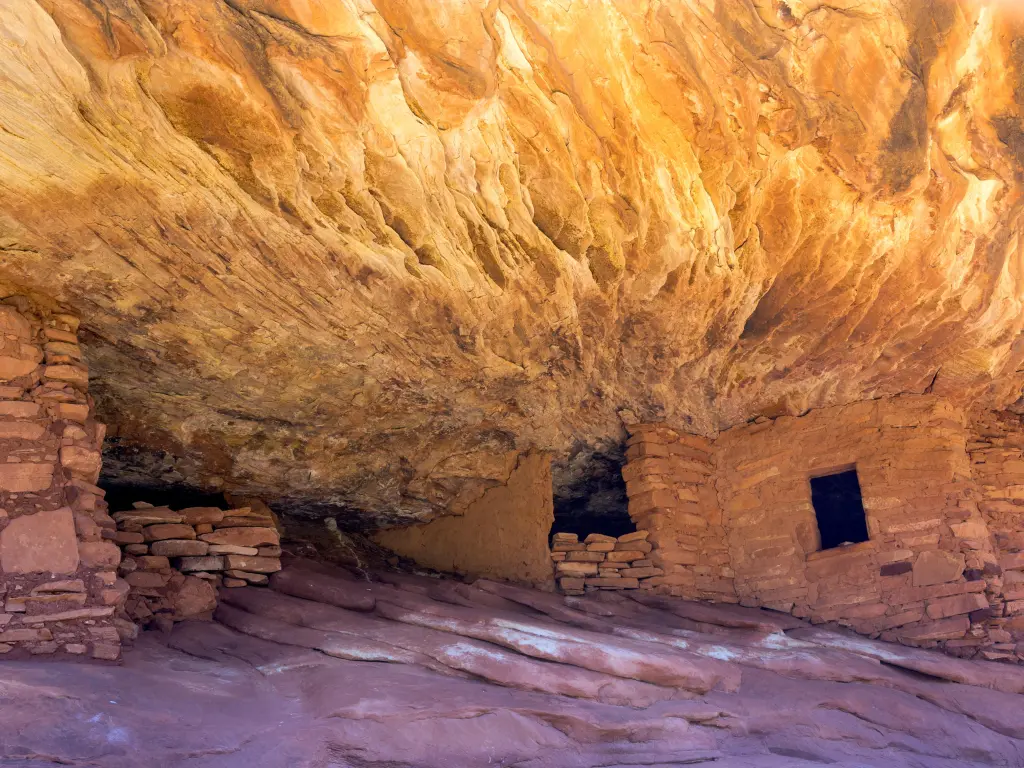
Stone Lizard Lodge is close to many of the local attractions, with Blanding Visitors Center, less than a 10-minute walk away and the Dinosaur Museum is also within walking distance.
Here you can view skeletons, fossilized skin, and dinosaur eggs, along with recreated sculptures of dinosaurs that once roamed the region. Blanding is also home to The Edge of the Cedars Museum and State Park, and the Utah State University Nations of the Four Corners Cultural Center.
A short drive from Blanding takes you to Ancient Wayves River and Hiking Adventures where you can enjoy guided hiking and backpacking tours, and the Valley of the Gods and Bears Ears Monument are both around 1 hour's drive away.
Where to camp in Canyonlands National Park
There are two campgrounds within Canyonlands National Park, and if you want to venture from the beaten track, its extensive trails lead to some stunning backcountry camping locations.
The official campgrounds are located at The Needles, and Island in the Sky. If you wish to spend a night under the desert sky at one of these locations, then do arrive early as they operate on a first come first served basis and fill up quickly from spring through to fall.
For summer camping, Island in the Sky Campground at Willow Flat is our preference. It's situated off Grand View Point Road and is more suitable for our alternative route through the park.
The site is open year-round and close to Green River Overlook, ideal for an evening stroll to catch a glowing sunset in this most peaceful and tranquil setting.
For winter camping around Canyonlands, Horesthief Campground is our choice. It is located in the pygmy pinyon-juniper forest on the mesas above Moab, giving you stunning views over Canyonlands and beyond.
The site itself is handily located for both our routes through the Park and has 56 sites for RVs which are more suited to camping over the winter months.
The site isn't particularly well shaded making it unsuitable for summer camping in the area, and is well equipped with toilets, picnic shelters and tables, and fire rings for a much cozier winter camping experience.
Things you need to know about driving through Canyonlands National Park
Canyonlands National Park is a breathtaking drive through the incredible rock formations that epitomize the stunning evolution of the Utah desert. They are captivating at any time of year, and, weather permitting, the park roads never close, although it is the weather that may determine when you decide to visit.
The summer months in Canyonlands are hot. Very hot in fact, with daytime temperatures often exceeding 100 degrees Fahrenheit and the extreme heat can make hiking and other outdoor activities challenging, and possibly dangerous.
The park is still popular with visitors at this time of year and you can counter the heat by arriving early in the morning or late afternoon. Summer thunderstorms can cause flash floods in the area, which can make driving on unpaved roads more tricky.
Winter in Canyonlands sees much milder climates, with daytime temperatures between 30 to 50 degrees Fahrenheit, making and ideal weather for hiking and visiting the many viewpoints.
Temperatures drop sharply in the desert at night and there can be road closures if the conditions become wintery, especially in the elevated Island in the Sky District.
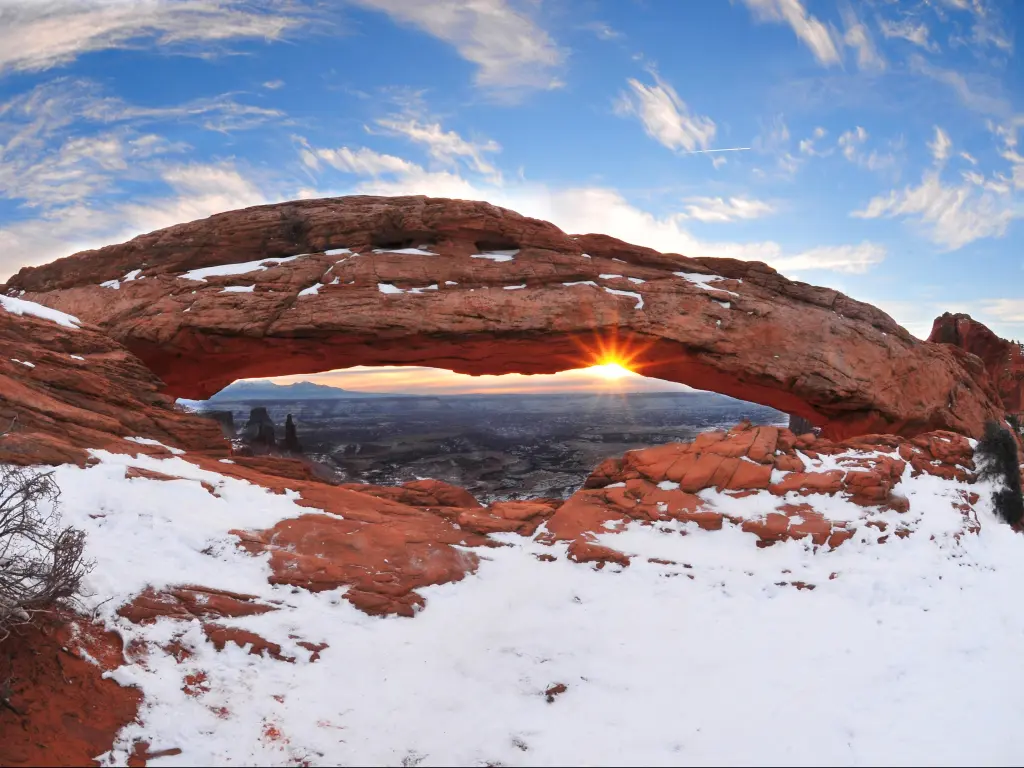
There will be fewer crowds, making it easier to park at the viewpoints and other attractions, but do bear in mind that Ranger services and campgrounds can be unavailable at this time of year so it is essential to plan your itinerary in advance.
Spring and Fall are popular times to visit Canyonlands National Park, with the weather ranging between 50 to 80 degrees which is perfect for outdoor activities, especially if you are planning to take to the water and try out whitewater rafting through the impressive canyons.
The colorful wildflowers blooming in springtime add another dimension to the red rock backdrop and the crowds will be much less than during the peak summer months.
| Ticket type | Provider | Adult fare | Car fare |
|---|---|---|---|
| Day pass | NPS | $15 | $30 |
| Annual pass | NPS | N/A | $55 |
*Calculated at the time of writing
Here are our top tips when it comes to preparing for a drive through Canyonlands National Park:
- Plan your route carefully according to your vehicle. Grand Point View Road is the best route for normal vehicles with its paved road surface. The more popular White Rim Road, our main route, does require a 4WD vehicle, and the roads can be narrow and twisty with no guardrails.
- Park permits are available to purchase online, so buy in advance to avoid queueing on arrival.
- If you are visiting in the summer months, arrive early to avoid the crowds and the midday sun.
- Keep an eye out for cyclists, they enjoy touring the park as well.
- If you're aiming to visit Canyonlands from outside of the US, remember to bring your passport.
- Given the remote desert location, fill up on gas before beginning your journey around Canyonlands.
- Stock up with supplies for the trip, especially bottled water in summer, and don't forget your sunscreen.
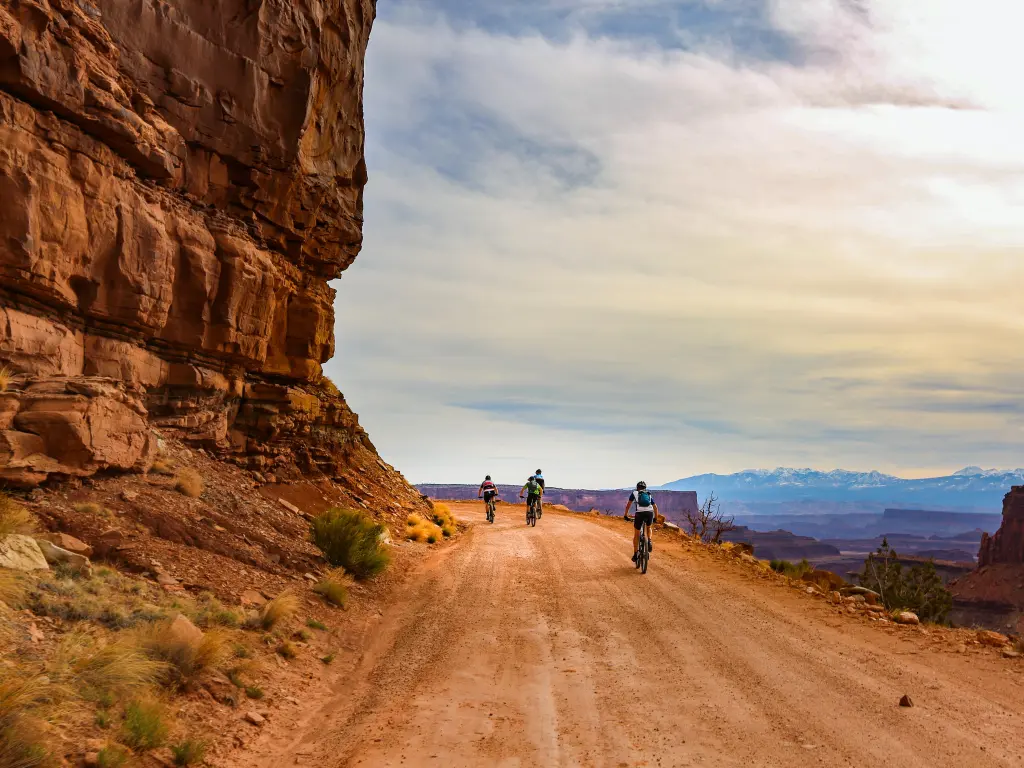
Things to see on a drive through Canyonlands National Park
On a road trip of this nature, there are so many natural wonders to see, that you'll be constantly amazed at what's around the next corner, so have your camera handy from the start. With so much to see, here are a few of our recommendations to help you plan your adventure:
- Mesa Arch - One of the most popular attractions in Canyonlands, and an iconic and much-photographed symbol of the park. You can reach Mesa Arch via an easy half-mile hike. It is popular at sunrise with its golden glow attracting crowds, also looking for expansive canyon views over White Rim through the frame of the arch.
- Grand View Point Overlook - Your reward at the end of Grand View Point Road. At the most southern point in the Island of the Sky district, you can see canyons for miles and the confluence of the Green and Colorado Rivers.
- Upheaval Dome - Located in the Island in the Sky area of Canyonlands, the Dome was formed around 60 million years ago by a meteorite crashing into the earth. There are two overlooks here reachable by a short hike
- Green River Overlook - Not far from an accessible parking spot, you can see the Green River from an awe-inspiring vantage point. Watch how the Green River twists and courses through the canyon.
- Shafer Canyon Overlook - See Shafer Canyon and the winding Shafer Trail below. You can watch backcountry drivers follow the route into the canyon.
- Aztec Butte - A round trip distance of 1.4 miles makes this a moderate hike. You'll reach the top of Aztec Butte, where you'll find ancient alcoves where indigenous people stored food in the rocks.
A drive through Canyonlands National Park is one you will never forget. It can be challenging at times but the rewards are well worth it to witness this incredible and unique landscape.

